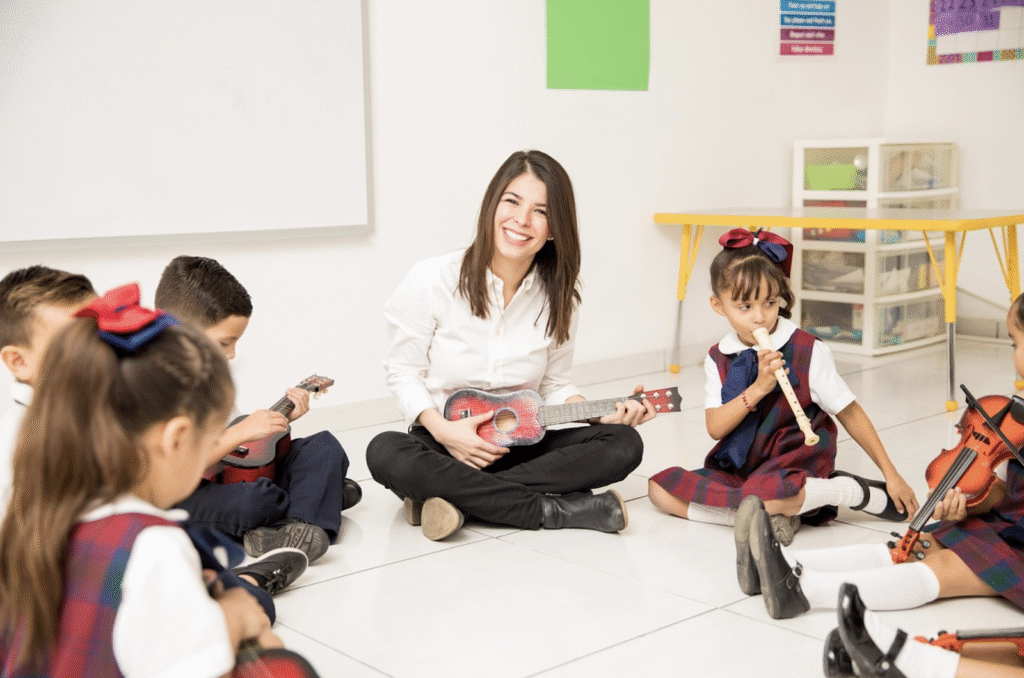- Content

First grade is not only a new start in education, but also the moment when a child first encounters the expectations of the adult world. That is why it is extremely important not to evaluate them according to general criteria, but to see the uniqueness in each one. At My Horizons, we understand that everyone has their own pace, their own character, and their own strengths. And it is thanks to this individual approach that they feel like a respected, understood, and supported personality rather than just a cog in the system.
Observation, adaptation, personal strategies
During the first weeks of school, our teachers do not just teach the material — they observe closely. How does the child react to new tasks? Do they feel confident among their peers? Do they need more time to express their opinion? Are they ready to take the initiative, or do they prefer to observe from the sidelines? For us, these are not trivial matters — they are important markers that help us see the child more deeply than the standard “passed/failed” scheme.
After a period of observation, the teacher develops a flexible strategy for interacting with each child. For some, it is important to have a clear algorithm of actions and repetition. Some need regular active breaks to maintain concentration. Some thrive in teamwork, while others prefer to think alone first. We do not force everyone to work the same way — we create conditions in which everyone can be themselves and grow at the same time.
All this happens unobtrusively, without diagnoses, labels, or comparisons. Our goal is for every first grader to feel that they are seen, respected, and taken into account. This is the best start for a confident path in learning.

Communication with parents is part of the process
Our individual approach begins long before the first bell rings — from the very first personal meeting with the family. We don’t just collect basic information about the child, we are genuinely interested in their world: what they like, how they react to new things, what worries them, what their day at home looks like. This is not a formal questionnaire — it is a warm, trusting conversation during which we begin to build a bridge of trust between the family and the school.
We maintain this connection throughout the school year. Teachers are always ready to discuss their observations, answer questions, and share successes or concerns. We do not focus on grades — we talk about the child’s development, progress, and emotional state. What inspires them? Where do they need more time? How can we support them at home to maintain trust and interest in learning?
A flexible environment for different rates of development
All children are different, which is why a one-size-fits-all approach does not work. We build a learning environment where every child has the opportunity to grow at their own pace — without pressure, comparisons, or rushing. One student reads quickly but does not like being the center of attention. Another is eager to share their thoughts but needs more time to formulate a written answer. Some want to answer orally, others want to draw or express their ideas using a construction set. This freedom does not interfere with discipline — it strengthens confidence. And it is this confidence that leads to joyful learning.

We alternate between different formats of work: individual tasks and pair work, interactive lessons and quiet blocks, creative activity and logical thinking. This allows each child to express themselves in the way that suits them best.
We do not force some children to “keep up” with others, nor do we hold others back. We create an environment where there is no need to compete — it is enough to be yourself and move forward, building on what you are already good at. It is this dynamic that shapes internal motivation, rather than external pressure. We see the uniqueness of each child from day one — and help them reveal their strengths.
Every child is unique. We see this from day one and help each first grader reveal their strengths.